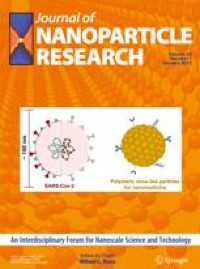Abstract
The aim of this work was to develop nanomaterials that can be used as sensitizers in radiotherapy treatment. The synthesis of bismuth sulfide (Bi2S3) particles with nanometer size by the hot injection method was studied as well as their behavior when coated with a biocompatible agent. The hot injection method allowed us to synthesize Bi2S3 nanorods measuring in average 4.2 ± 1.4 nm in width and 27.5 ± 16.3 nm in length. Moreover, to improve their biocompatibility, these nanorods were coated with polyvinylpyrrolidone with the purpose of studying the behavior of nanorods in the bloodstream. The results indicated that the suspensions were more stable when the media had protein components which may facilitate the blood circulation of the particles. The toxicity of the nanorods and their radiosensitization potential were evaluated and determined in breast cancer cells (MCF7). These results show that the synthesized nanorods did not evidence cytotoxicity up to a concentration of 2500 μg/mL, over 72 h of incubation. On the other hand, the sensitivity of MCF7 cells with and without nanorods in the culture medium, afterward irradiating them with a dose of 2 Gy 60Co gamma radiation source, showed a 38% increase in cell death when compared to cells that were only irradiated. Our results show that Bi2S3 nanorods are very promising as anticancer agents improving the efficiency of radiotherapy.



No comments:
Post a Comment